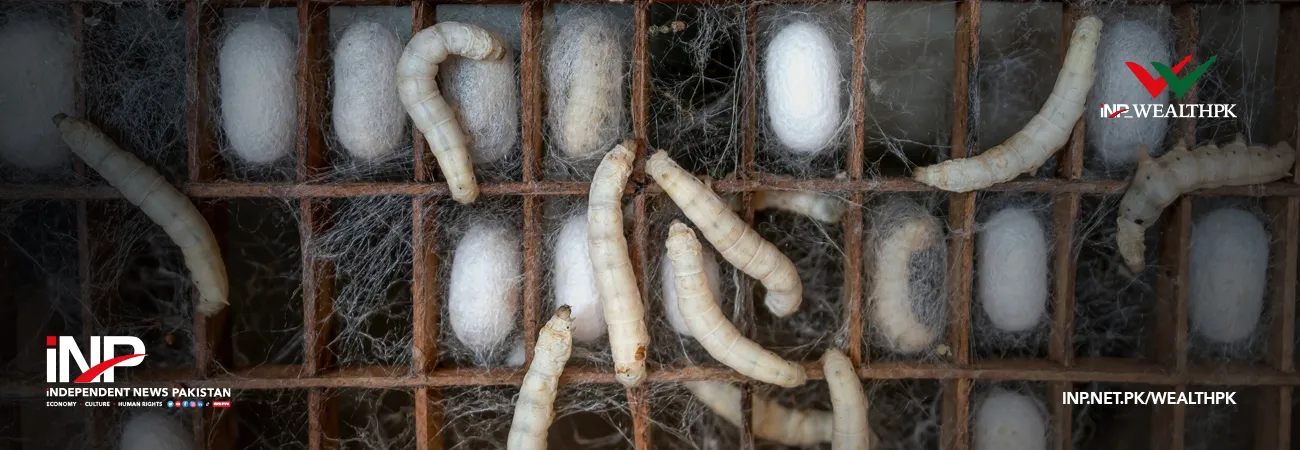INP-WealthPk
Faiza Tehseen
By promoting indigenous sericulture, Pakistan can become a significant player in the global silk industry.

“Production of domestic natural silk floss and fiber/thread domestically will not only help meet the local industry needs but also cut back on imports, besides exporting the natural raw silk and its products,” said Muhammad Aatif Majeed, Deputy Director (Technical) at the Pakistan Forest Institute (PFI), Peshawar. Talking to WealthPK, he said sericulture had been taken as a cottage industry in Punjab since 1947, while Khyber Pakhtunkhwa (then North West Frontier Province) adopted it in 1952, Balochistan in 1959 and Sindh in 1976. “Despite being the oldest cottage industry in Pakistan, it never flourished due to a lack of training of people associated with it and research and development. Silkworm rearers are only using the traditional methods.” He said Chinese and Korean experts provided Pakistanis with technical training on modern sericulture techniques. “As mulberry leaves are mostly used to feed silkworms, so mulberry cultivation and management was also a significant part of the training.”
Aatif said PFI had imported silkworm F1 seeds from China and Japan, bred them for five years and, through segregation and selection, identified six pure silk strains with excellent parental characteristics. “C-102, 205-PO and 206-PO were Chinese strains, while J-101, 205-MKD and 206-MKD were Japanese varieties. So, the first-ever disease-free F1 silk seed containing 5,500 boxes was produced, containing around 2,000 eggs. They were further distributed to farmers, silkworm rearers and public sector organisations.” In Pakistan, he said silkworm rearing was done in two seasons – spring (February to Aril) and autumn (September to November). “Some silkworm types are univoltine (can be reared once a year), and some are bivoltine (can be reared twice a year).” He said that to improve sericulture expertise, PFI conducts regular training sessions for experts, farmers, and rearers concerning silkworm management, developing new strains, and sharing innovations. “Special training sessions are also conducted for women to empower them economically. The introduction of marketing tactics is also part of the training sessions.
PFI has also published literature in both English and Urdu to highlight modern silkworm-rearing techniques according to the local environment.” Aatif said that apart from fabric weaving, natural silk and its value-added products were widely used for a variety of industrial purposes – parachute manufacturing, fabrication of artificial blood vessels, surgical suture, biomaterial production, non-conductive fabric, artillery gunpowder bags, herbal medicines, fish feed, fertiliser, nutrients and furniture fillings. Highlighting the importance of bringing awareness about silkworm rearing and value addition, Sardar Muhammad Sabir, Chairman of the Galiyat Tahaffuz Movement, told WealthPK that the environment in KP was ideal for silkworm rearing. “China is the largest silk-producing country,” he said, adding that this cottage industry should be strengthened with the help of Chinese expertise to help farmers generate incomes for them. “Besides silkworm rearing, silk value-addition is also necessary. The government should focus on this non-timber forest product for income generation.”
Credit: INP-WealthPk













